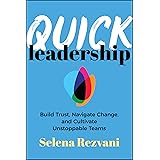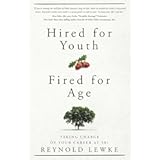Navigating the professional landscape often presents individuals with a significant emotional hurdle: the fear of changing jobs. A recent survey indicated that approximately 47% of professionals express anxiety about making a career transition, often stemming from the unknown. This apprehension can manifest as procrastination, a lack of motivation, or even a deep-seated belief that one is simply being “lazy.” However, as discussed in the accompanying video, this inertia is frequently rooted in a more fundamental psychological phenomenon: the fear of discomfort. Rather than being a life-threatening response, this fear primarily hinders professional development. Overcoming this pervasive career change fear requires a strategic and methodical approach, involving the reframing of discomfort, envisioning future scenarios, cultivating a compelling purpose, preparing for setbacks, and systematically deconstructing the transition process.
Deconstructing the Discomfort: A Psychological Perspective on Career Change Fear
Fear, in its most primal form, serves as an essential protective mechanism, alerting us to genuine dangers such as oncoming traffic. However, in the context of career transitions, the perceived threats are typically not existential. Instead, they are psychological. Two distinct categories of discomfort are commonly encountered during a career change, and understanding these can significantly mitigate job search anxiety.
Navigating New Interpersonal Dynamics
One primary source of unease is the prospect of adapting to new people and evolving corporate cultures. When individuals have dedicated a decade or more to a single organization, intricate social networks are invariably formed. These relationships often extend beyond the workplace, evolving into personal friendships and community ties. The thought of abandoning this established support system, which may feel like a familial bond, can be profoundly unsettling. This discomfort is particularly pronounced for individuals who naturally prefer stability in their social environments. The inherent uncertainty of forging new connections and deciphering unfamiliar social norms within a new professional setting is a formidable barrier. Yet, such a transition also presents an opportunity to broaden one’s professional network and gain exposure to diverse perspectives.
Mastering Unfamiliar Operational Frameworks
Conversely, another significant aspect of discomfort arises from the necessity of acclimating to new processes and operational workflows. Within a long-term role, an individual typically possesses an intimate understanding of their organization’s specific protocols, departmental responsibilities, and unwritten rules. This mastery fosters a sense of competence and efficiency. Moving to a different company, even within the same industry, necessitates a complete re-learning curve. This often involves deciphering nuanced differences in internal systems, understanding new software, and adapting to distinct procedural methodologies. The initial phase of reduced efficiency and the feeling of being a novice can be discouraging. However, this period of adjustment is a transient phase that ultimately leads to expanded skill sets and adaptability, invaluable assets in modern career development.
Envisioning Alternate Realities: The Power of Prospective Thinking
A powerful technique for surmounting the fear of changing jobs involves a disciplined exercise in prospective thinking. Individuals are encouraged to vividly imagine two contrasting future scenarios, thereby clarifying the stakes involved in their current career decisions.
Scenario One: The Transformative Career Shift
In the first scenario, one envisions a successful career transition where the initial discomfort of adaptation is overcome, leading to significant personal and professional enhancement. For instance, a professional who, at 30, feels undervalued at $52,000 after eight years, might imagine securing a new role offering $70,000, along with opportunities for meaningful work and a more balanced lifestyle. This strategic career move is projected to result in increased job satisfaction, enhanced fulfillment, and a palpable improvement in overall quality of life. The transient period of adjustment is superseded by a future characterized by growth and renewed engagement.
Scenario Two: The Perils of Stagnation
Conversely, the second scenario confronts the reality of prolonged stagnation. Consider the professional who, at 30, contemplates remaining in their unfulfilling role for another 10 to 35 years, potentially until retirement at 60 or 65. This extended period within an undesirable environment could culminate in profound resentment, chronic irritation, and a detrimental impact on mental well-being. The opportunity cost of avoiding discomfort is often underestimated, as personal growth, financial advancement, and the pursuit of genuine career fulfillment are sacrificed. This stark contrast serves as a potent motivator, illustrating that the perceived safety of the familiar may harbor far greater long-term risks than the short-term discomfort of change.
Cultivating a Compelling Purpose: The Antidote to Inertia
Often, the most effective countermeasure to the fear of changing jobs is the cultivation of a deeply meaningful purpose. This sense of excitement and resolve can override the intrinsic anxieties associated with professional transition. A strong “why” provides the necessary impetus to overcome the “how” of change.
Defining Your ‘Why’ Beyond Monetary Gains
While financial remuneration, such as moving from a $52,000 to a $70,000 salary, can be a significant motivator, its impact is amplified when linked to a higher purpose. For example, the additional income might facilitate the purchase of a first home, enable annual overseas vacations, or provide greater financial security for one’s family. These tangible life improvements lend a profound sense of meaning to the pursuit of a higher salary. It is often observed that newcomers to an organization are positioned more advantageously to negotiate favorable compensation packages compared to long-tenured employees, highlighting a pragmatic aspect of career advancement.
Envisioning a Granular Future
Developing a powerful purpose involves meticulously visualizing one’s life ten years into the future, far beyond typical interview questions. This exercise encompasses not merely career aspirations but the entirety of one’s desired lifestyle. If a future involving ample family time, international travel, and professional flexibility is desired, then the specific attributes of a new role—such as remote work options, flexible hours, or sabbatical opportunities—become clear objectives. Working backward from this detailed vision to the present day allows for the identification of concrete steps and the articulation of a compelling ambition. This holistic perspective ensures that career decisions are aligned with overarching life goals, fostering deep personal fulfillment and diminishing the influence of fear.
Preparing for Inevitable Rejection: A Strategic Mindset
A prevalent component of job search anxiety is the apprehension of rejection. However, success in any ambitious endeavor, including career transition, invariably involves encountering numerous setbacks. A proactive mental preparation for these eventualities can significantly ameliorate the psychological impact of negative outcomes.
Embracing Rejection as a Stepping Stone
Rejection is an ubiquitous experience in life, whether one is seeking new employment, pursuing a startup venture, or even attempting to secure funding for a creative project. The video highlights a personal anecdote of pitching a feature film project, enduring approximately 50 rejections before ultimately securing approval. This illustrates that persistence, rather than immediate success, is often the critical determinant. Similarly, Napoleon Hill’s narrative of the gold miner who stopped “three feet from gold” underscores the importance of perseverance. Expecting a number of rejections—perhaps 10, 20, 50, or even 100—transforms these occurrences from personal failures into statistical probabilities. Each “no” is not an indictment of one’s worth but rather data point, informing and refining subsequent efforts in resume optimization, networking strategies, and interview techniques. This mindset is crucial for individuals navigating the often arduous path of career transition, transforming potential discouragement into actionable feedback.
Deconstructing the Task: Mitigating Overwhelm in Career Transition
The sheer magnitude of a job or career change often appears insurmountable, inducing a paralyzing fear. This mental barrier can be effectively dismantled by breaking the entire process into exceedingly small, manageable, and highly specific steps. This method significantly reduces psychological resistance.
Granular Planning for Overcoming Procrastination
Rather than confronting a vague and intimidating task like “update resume,” this approach advocates for hyper-specific actions. For instance, the initial step could simply be: “On Saturday at 3:00 p.m., after lunch and coffee, open my old resume file and read through it for 15 minutes.” This highly detailed instruction reduces the cognitive load and makes the task appear non-threatening. Subsequent steps might include: “On Tuesday at 7:00 p.m., add only the latest work experience to my resume.” Such micro-tasks are less likely to trigger the overwhelm that leads to procrastination. By meticulously scheduling these small, clearly defined actions into a calendar, the mental burden associated with the overall career transition is systematically diminished. This granular approach fosters a sense of incremental progress, building momentum and gradually eroding the initial career change fear.









